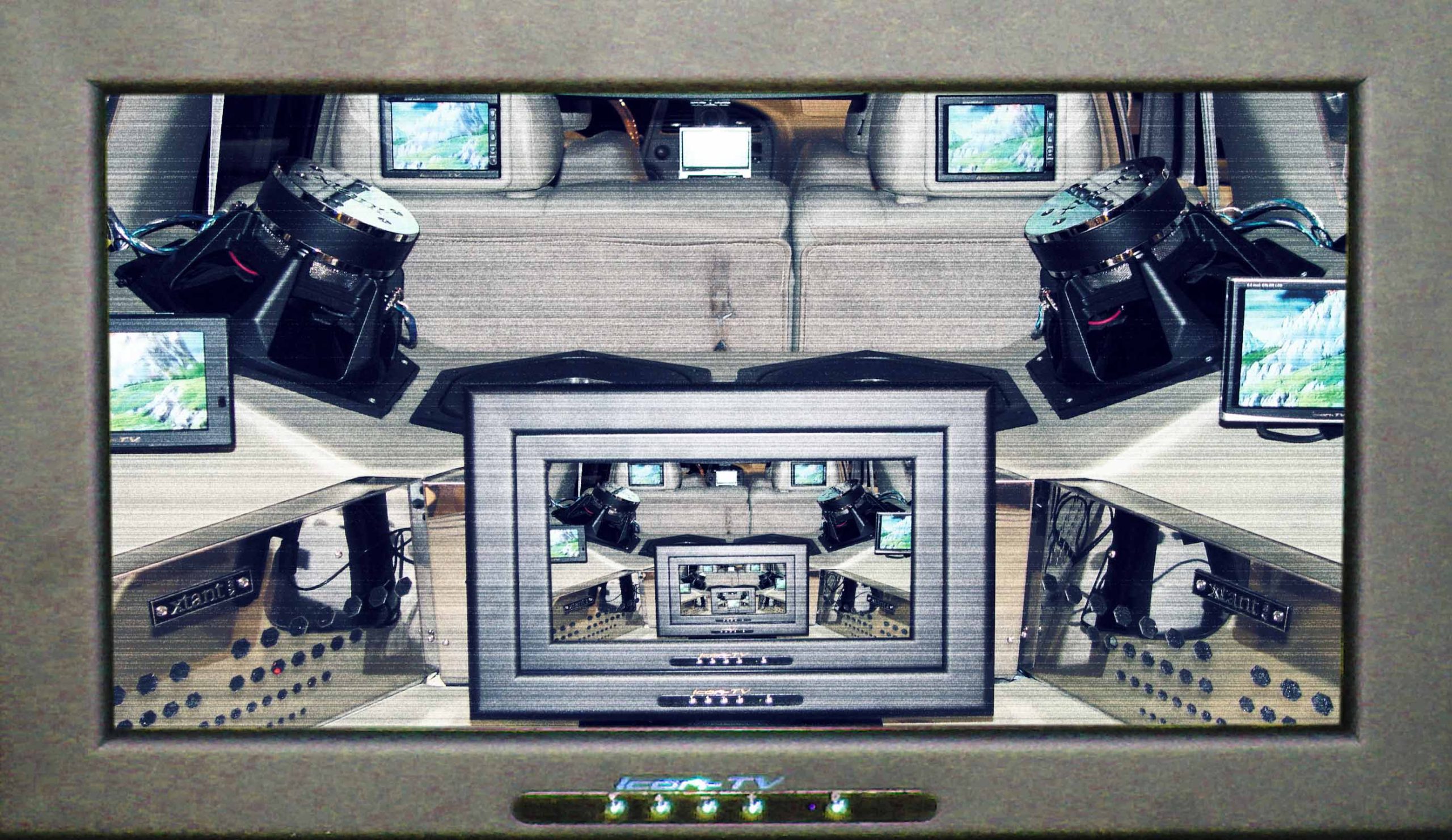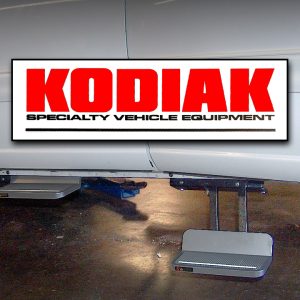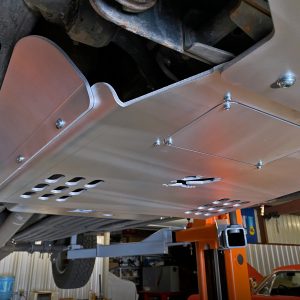


THE AUTO BUILDER
Featured


STEPPIN’ UP TO A LIFTED TUNDRA

PRODUCT SPOTLIGHT: Halo T-60 Bench Seat by Eddie Motorsports
- All Post
- 20 High Priority - SR Super Rod
- Builds
- 25 High Priority - FB Ford Builder
- Cars
- 30 High Priority - AR American Rodder
- 01 Post Status
- 35 High Priority - RD Rodders Digest
- 40 High Priority - OTR On the Road
- 45 High Priority - SRB Street Rod Builder
- 50 High Priority - TB Truck Builder
- 55 High Priority - BSCENE Buckaroo Scene
- 60 High Priority - FPB Family Power Boat
- Trucks
- Swaps
- Performance Boats
- _000 Home Sliders
- Builders
- 00 Sidebars
- Manufacturers
- 05 High Priority - HCI Hot Compact Imports
- 05 Publications
- 10 High Priority - CR Chevy Rumble
- Back
- Chassis
- Engine
- Fuel System
- Electrical
- Exhaust
- Transmission / Drivetrain
- Suspension
- Steering
- Brakes
- Wheels and Tires
- Interior
- Exterior
- Accessories
- Power Adders
- Back
- Chassis
- Engine
- Fuel System
- Electrical
- Exhaust
- Transmission / Drivetrain
- Suspension
- Steering
- Brakes
- Wheels and Tires
- Interior
- Exterior
- Accessories
- Power Adders
- Back
- Chassis
- Engine
- Electrical
- Exhaust
- Fuel System
- Transmission / Drivetrain
- Suspension
- Steering
- Brakes
- Wheels and Tires
- Interior
- Exterior
- Accessories
- Power Adders
- Back
- Chassis
- Engine
- Electrical
- Exhaust
- Fuel System
- Transmission / Drivetrain
- Suspension
- Steering
- Brakes
- Wheels and Tires
- Interior
- Exterior
- Accessories
- Power Adders
- Back
- Chassis
- Engine
- Fuel System
- Electrical
- Exhaust
- Transmission / Drivetrain
- Suspension
- Steering
- Brakes
- Wheels and Tires
- Interior
- Exterior
- Accessories
- Power Adders
- Back
- Chassis
- Engine
- Fuel System
- Electrical
- Exhaust
- Transmission / Drivetrain
- Suspension
- Steering
- Brakes
- Wheels and Tires
- Interior
- Exterior
- Accessories
- Power Adders
- Back
- Chassis
- Engine
- Fuel System
- Electrical
- Exhaust
- Transmission / Drivetrain
- Suspension
- Steering
- Brakes
- Wheels and Tires
- Interior
- Exterior
- Accessories
- Power Adders
- Back
- Engine
- Fuel System
- Electrical
- Outdrives
- Steering
- Interior
- Accessories
- Power Adders
- Exterior and Hull
- Back
- Chassis
- Engine
- Electrical
- Exhaust
- Fuel System
- Transmission / Drivetrain
- Suspension
- Steering
- Brakes
- Wheels and Tires
- Interior
- Exterior
- Accessories
- Power Adders
- Back
- Chevrolet
- Cadillac
- Pontiac
- AMC
- Buick
- Jeep
- Lincoln
- Ford
- Honda
- GMC
- BMW
- Mitsubishi
- Dodge
- Nissan
- Chrysler
- Subaru
- Toyota
- Plymouth
- Mercury
- Volvo
- Volkswagen
- Oldsmobile
- Acura
- Back
- 05 Pub HCI Hot Compact Imports
- 15 Pub 4x4 4x4 Builder
- 20 Pub SR Super Rod
- 25 Pub FB Ford Builder
- 30 Pub AR American Rodder
- 35 Pub RD Rodders Digest
- 40 Pub OTR On the Road
- 55 Pub BSCENE Buckaroo Scene
- 10 Pub CR Chevy Rumble
- 50 Pub TB Truck Builder
- 60 Pub FPB Family Power Boat
- 45 Pub SRB Street Rod Builder
- Back
- Chip Foose
- Ring Brothers
- Jack Fuller
- Bob Cullipher
- Jerry Nichols
- Bobby Alloway
- Jesse James
- Carl Casper
- J.F. Launier
- Steve Sellers
- Boyd Coddington
- Rad Rides by Troy
- Cal Auto Creations
- George Barris
- West Coast Customs
- Back
- Street Rods
- Hot Rods
- Late Model
- Drag Race
- Handling
- Compact Cars
- Chassis
- Engine
- Fuel System
- Electrical
- Exhaust
- Transmission / Drivetrain
- Suspension
- Steering
- Brakes
- Wheels and Tires
- Interior
- Exterior
- Accessories
- Power Adders
- Chassis
- Engine
- Fuel System
- Electrical
- Exhaust
- Transmission / Drivetrain
- Suspension
- Steering
- Brakes
- Wheels and Tires
- Interior
- Exterior
- Accessories
- Power Adders
- Chassis
- Engine
- Electrical
- Exhaust
- Fuel System
- Transmission / Drivetrain
- Suspension
- Steering
- Brakes
- Wheels and Tires
- Interior
- Exterior
- Accessories
- Power Adders
- Chassis
- Engine
- Electrical
- Exhaust
- Fuel System
- Transmission / Drivetrain
- Suspension
- Steering
- Brakes
- Wheels and Tires
- Interior
- Exterior
- Accessories
- Power Adders
- Chassis
- Engine
- Electrical
- Exhaust
- Fuel System
- Transmission / Drivetrain
- Suspension
- Steering
- Brakes
- Wheels and Tires
- Interior
- Exterior
- Accessories
- Power Adders
- Chassis
- Engine
- Fuel System
- Electrical
- Exhaust
- Transmission / Drivetrain
- Suspension
- Steering
- Brakes
- Wheels and Tires
- Interior
- Exterior
- Accessories
- Power Adders
- Back
- 05 Post Imported
- 20 Post Missing Images (All)
- 25 Post Missing Images (Partial)
- 15 Post In Progress
- 30 Post Internal Review
- 40 Post On Hold
- 50 Post Approved
- 10 Post Images Imported
- 17 Post Missing TXT Files
- 18 Post Missing PDF Files
- 27 Post Missing Content
- Back
- Chassis
- Engine Swaps
- Interior Swaps
- Driveline
- Back
- Street Trucks
- OffRoad Trucks
- Chassis
- Engine
- Fuel System
- Electrical
- Exhaust
- Transmission / Drivetrain
- Suspension
- Steering
- Brakes
- Wheels and Tires
- Interior
- Exterior
- Accessories
- Power Adders
- Chassis
- Engine
- Fuel System
- Electrical
- Exhaust
- Transmission / Drivetrain
- Suspension
- Steering
- Brakes
- Wheels and Tires
- Interior
- Exterior
- Accessories
- Power Adders
- Back
- 01 Sidebar Left
- 01 Sidebar Right
Spotlighter
POPULAR READS
I.C.E. : IN-CAR ENTERTAINMENT
THE BEGINNING, WHAT’S CURRENT AND WHAT THE FUTURE MAY HOLD
Author

Jesse Poole
Words + Photography by The Auto Builder Staff
BACK IN THE early days, having a custom stereo meant that you installed a head unit and a set of mid- and high-range speakers. Then the wonders of subwoofers and amps came along. When these components first came out, they were very large and required huge amounts of space to install. They offered, at best, a distorted sound compared with the standards of today. Ten years ago, most enclosures, when they were used at all, were generally a box or a square made of wood.
Today many things have changed and much has evolved along the way. First, look at one of the most important elements of all for a stereo—clarity. Most of your stock OE and aftermarket stereo speakers, as well as the majority of the older speakers, were made with a paper cone. The broad definition of a cone is that it is the sound-making part of a speaker—that portion which moves back and forth, surrounded by air. Paper speakers, although the standard at the time, were not at all optimum if you wanted a crystal-clear sound. Now speaker cones are made from polymers and silicone, which have far more flexibility and a night-and-day difference in clarity and crispness of the sounds (notes) emitted from the speaker.
Not only have speakers come a long way in their physical and dynamic designs, but head units also have grown by leaps and bounds compared to the earlier days of custom stereos. It used to be that the head unit served a basic function: to play the cassette or CD that was placed in the head unit. As the years progressed, so did head units. First they became more colorful, with red LCDs (liquid crystal displays), and these displays showed multiple colors on the screens. Later we started to see multicolored graphic equalizers. This was followed by head units that controlled multiple CDs, but the CDs were stored in CD changers positioned someplace else in the car. This satisfied our need for more music without having to keep changing discs, which helped make those long road trips to our favorite tuner shows more bearable.
Big manufacturers really started turning up the heat in the audio visual display department, as we began seeing screen savers and video motion on the face of our head units, fold-out faces with flat backs for security, as well as detachable faceplates. Then we had video screens being placed throughout our cars, even in the sunshades.
In the last couple of years, we have seen video screens that rotate out and flip up from the inside of normal, thin head units that were once 5 or 6 inches tall. Today we are seeing 7-1/2-inch screens and even 9-inch, flip-out-screen head units. Our head units now even play hot video game systems such as PlayStation 2 and Xbox.
We can also watch our favorite DVDs, which are a must if you want to compete by today’s show standards, or to make those long trips to and from the shows more entertaining. You cannot talk about TV monitors and not mention that the hottest thing today is the video monitor in the rearview mirror. These things are killer—must-haves for a top-contending show interior. MP3 players came out and were immediately successful. These cool devices were able to read music downloaded from the Internet.
Another hot commodity to hit the car stereo scene as of the last two years is XM radio. Satellite head units now have the capability to play continuous music nationally, with no commercials. There are hundreds of stations for each style of music, be it hip hop, trance, jungle, gospel, country or whatever your taste. You can also get weather, sports and news. This is really something worth looking into when you purchase your next head unit.
Another option that has become popular in the in-car entertainment industry is navigation. You can now load up a disc and have maps, directions and even phone numbers for every state and city. This will make all your travels to favorite events much easier to plan and coordinate. It will save you money and time and help keep you from getting lost, making it a useful safety feature.
"WE CAN ALSO WATCH OUR FAVORITE DVDS, WHICH ARE A MUST IF YOU WANT TO COMPETE BY TODAY'S SHOW STANDARDS."
Let’s take a moment to look at amplifiers. When these components first hit the market, they were very large and used massive amounts of power, which usually resulted in a drained battery. Back in the early days, most amplifiers were run at 4 and 5 ohms. One ohm is defined as the resistance that causes one volt to drop for each amp flowing through the resistance. The higher the ohm, the more apt the amp was to send distortion through the speaker and the more power it took to run the amplifier from the battery. These amplifiers also generated tremendous amounts of heat. There were times when amplifiers would even smoke and catch on fire, generating enough heat to melt the speaker enclosure. Today, top audio manufacturers are designing amps that are stable all the way down to 1/2 ohm. What this means for us is that we can now run our amps for longer periods and with less strain on the battery. Running amplifiers at a lower ohm rating also means that there will be less noise and distortion through the speakers. The definition of distortion is “the undesirable alteration in a signal.”
Some amplifiers are now equipped with built-in cooling fans to help keep everything cooler inside the amplifier casings. Remember, excessive heat is as bad for your stereo components as it is for your engine. Today’s amplifiers—and there are many—also have the capacity to run more channels with more power from a single amplifier, and they can do this at a lower price than in the past. Most serious stereo installs will have more than one amplifier; in this case, you will most often find the amplifiers bridged. “Bridged” is the condition that exists when a load is connected across two active channels that are fed with the same input signal, but one of the channels is operated out of phase with respect to the other. An installer connects amplifiers in a bridged configuration so that two amps can power a single speaker. This is done so a larger amount of power can run to a single subwoofer. When choosing an amplifier, remember that its RMS power rating is not just the peak power. An amp cannot run at peak power continually; it can do that for only short periods of time. RMS is very important because it is the power that the amplifier can generate for a continuous length of time. Another consideration is what frequency an amplifier can emit. Years ago, amplifiers had very limited frequencies. Now they are emitting from 20 to 20,000 hertz, which gives us more power and a greater efficiency level.
“WHEN CHOOSING AN AMPLIFIER, REMEM- BER ITS RMS POWER RATING ...RMS IS VERY IMPORTANT BECAUSE IT IS THE POWER THAT THE AMPLIFIER CAN GENERATE FOR A CON- TINUOUS LENGTH OF TIME."
Speakers have come a long way in the range and clarity of music that they can emit. Also, speaker size has slowly progressed, going from 8 inches all the way up to 18 inches for subwoofers. Let’s not forget the different-size speakers for mid- and high-range music. This leaves almost unlimited combinations and possibilities for installing and designing a simple—or insanely complex—in-car entertainment system. Most stereo systems of earlier days were designed with aftermarket mid- and high-range speakers located in the stock quarter panel, with a rectangular or square subwoofer enclosure mounted in your trunk or the hatch of your vehicle. These were generally made out of wood. A lot has changed since those days, because we now have enclosures made from fiberglass, Plexiglas and all sorts of different molded materials. Enclosures have also evolved from simple shapes to creations that are truly works of art.
Speakers are mounted in places never thought possible, such as floorboards and even floor-to-ceiling in the rear. Some audio enthusiasts take out the backseat to stuff in more speakers. Another trend is custom speaker enclosures and kick panels. The wonders of today’s sub speaker enclosures almost boggle the mind. We see vehicles stuffed with speakers from wall to wall. Then there are those cars with a simple, clean design—a sub or two and a good set of mid- and high-range speakers, which still gets the job done.
One of the great things about the advancements in the audio visual industry is that no matter what you want done to your car, if you can imagine it and you have the cash, it can be done. This simply wasn’t the case in the past. If you go to a big show today, you would be hard pressed to find two cars with the same stereo design and setup.
It’s a wonderful accomplishment to work hard and save your money to design the stereo of your dreams for your hot car. When you get your dream system, you must also remember that it is just as important to keep your system yours. This is where you must take a good, hard look at auto security. Years ago, alarms were very basic. This was good, but as car thieves became more advanced, they secured devices capable of reading the alarm codes that were sent from the alarm control to the car. So, even though you set the alarm, they could punch the code and bypass it, then steal your vehicle. This lead to the development of code-hopping alarms, which change codes over and over so as to never emit a frequency that will get detected, due to the millions of combinations available.
As always, however, we as consumers wanted more so we could set ourselves apart from the rest of the crowd. Alarm companies now make alarms capable of doing trick things such as rolling the windows up and down, turning on the stereo and even controlling the volume. On cold nights, we can even start our cars from handheld remotes. You now have many options, even when it comes to keeping your car safe.
Remember this simple rule for in-car entertainment: As with so many other things in life, you get what you pay for. In this game, it really does hold true for every component we have discussed here. Do your research and go with a reputable company that has been in the industry for some time. There is usually a good reason that it has been around so long. Most of all, enjoy what you have worked so hard for. After all, what you are creating is an entertainment system.













